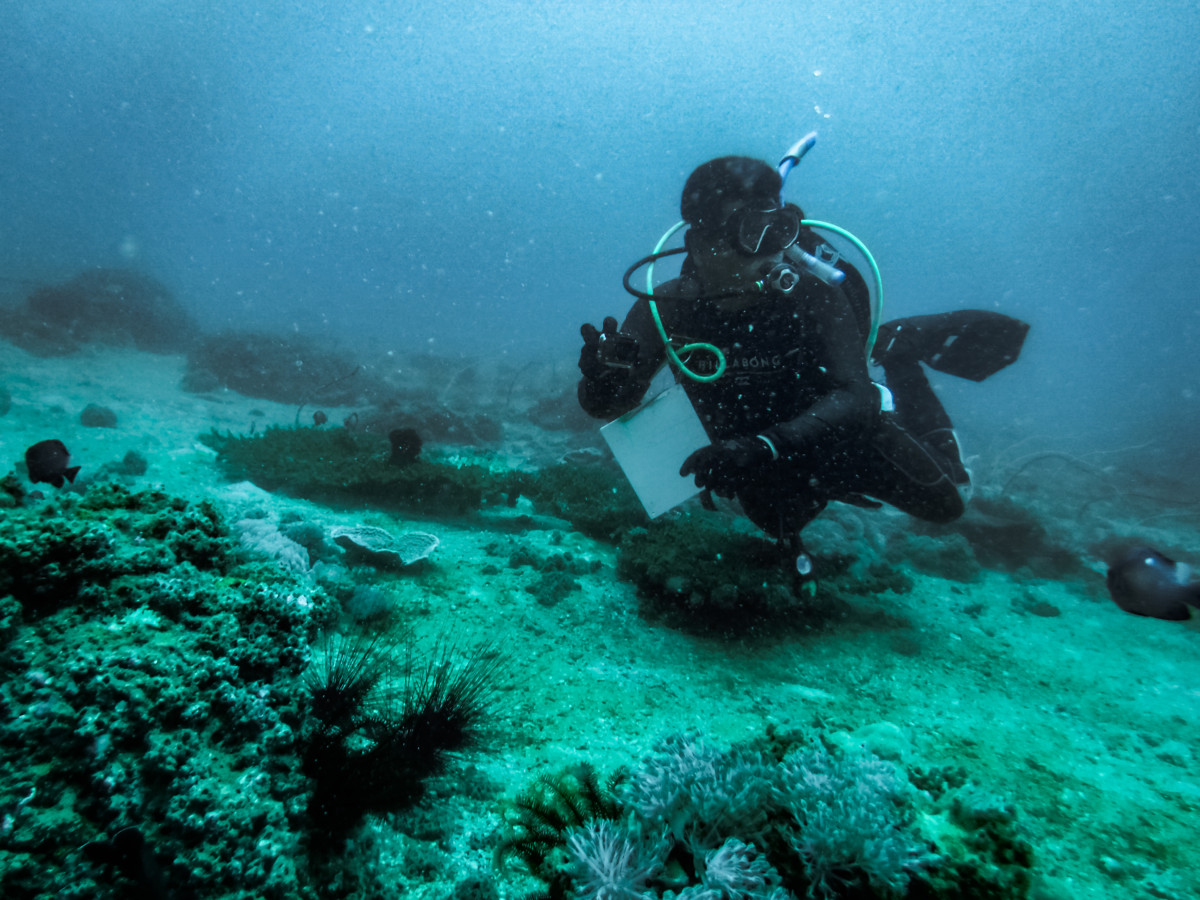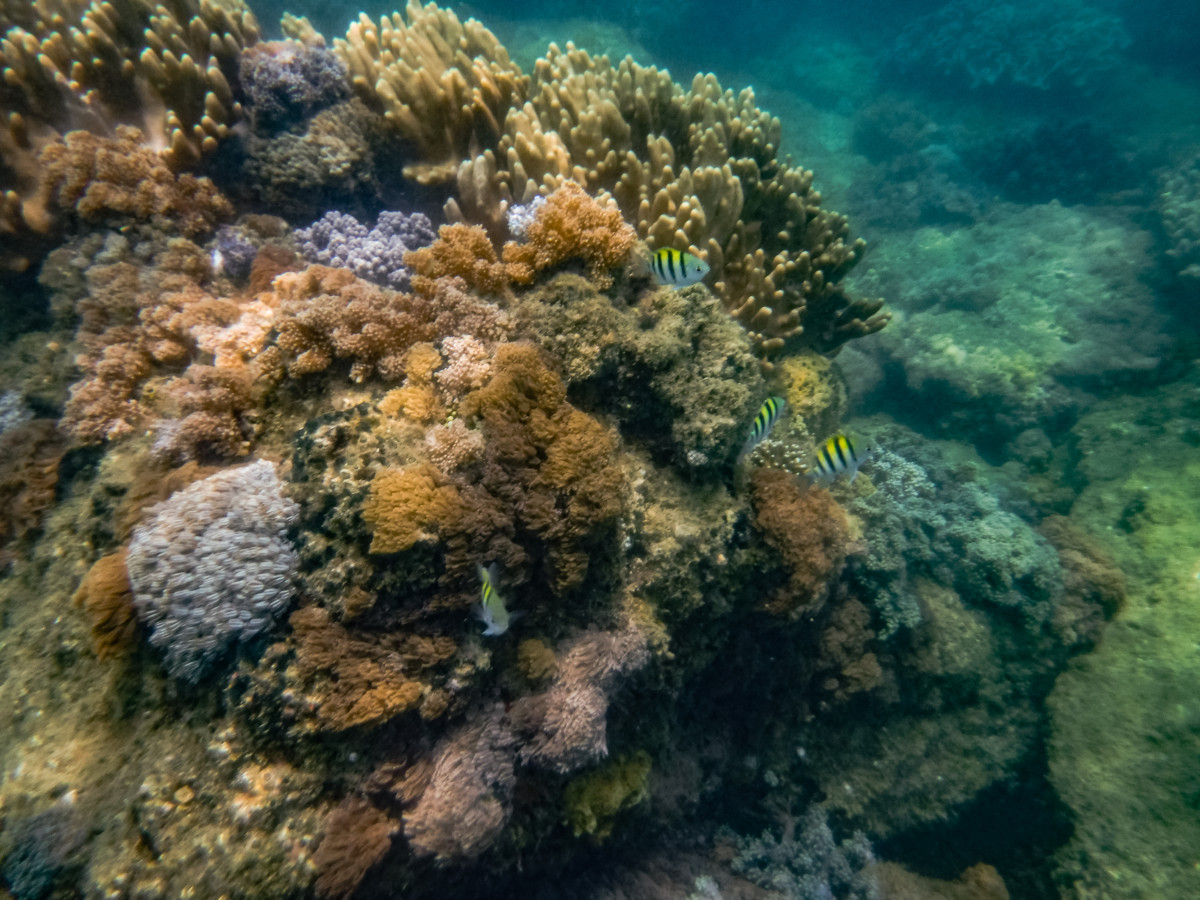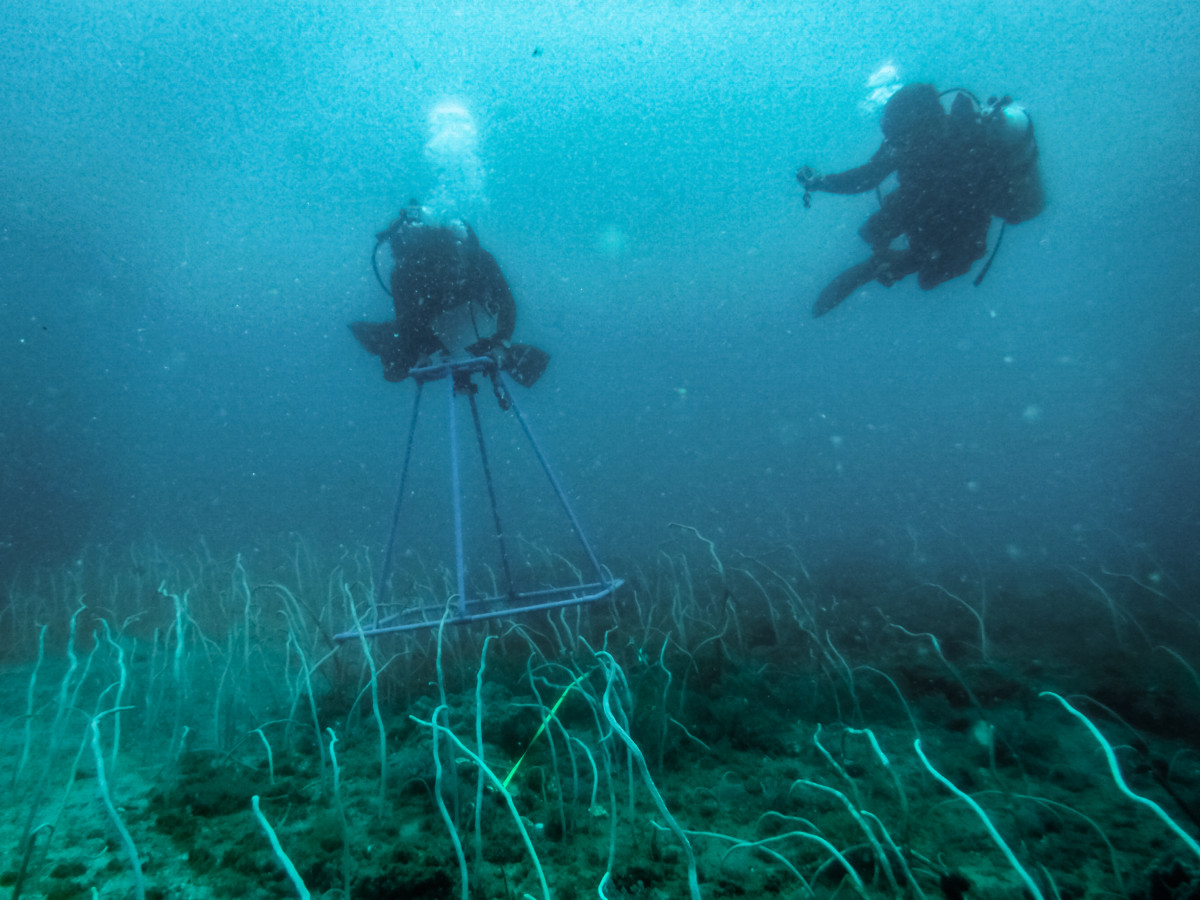Fish Return to Damaged Reefs in Sorsogon
October 2020

Clown fish rest in their home anemone in a reef area off the coast of Pilar, Sorsogon. Fish populations have begun to return to the reefs of Pilar, once heavily damaged by human activity. Photograph © WWF-Philippines
SORSOGON– A recent study conducted by the World Wide Fund for Nature (WWF) Philippines, together with CBP Marine Services, Bureau of Fisheries and Aquatic Resources (BFAR) Region V, and the Palompon Institute of Technology, revealed that fish populations have increased in protected reefs off the coast of Pilar, in the province of Sorsogon.
The update comes after a similar study conducted in 2017 revealed the extent of damage suffered by the reef. While there were fish present at the two sites, coral reef cover was sparse, with much of it destroyed.

A researcher takes photographs and videos as he documents reef conditions in the Pilar MPA. Though fish populations have begun to return, the reef remains heavily damaged, with sand and soft corals making up much of the sea floor area. Photograph © WWF-Philippines
The municipality of Pilar is part of the Ticao-Burias Pass Protected Seascape (TBPPS). WWF-Philippines has been active in the Ticao-Burias Pass since 1998. Home to the whale shark and manta rays, the TBPPS is recognized as an important habitat. The organization works with local communities toward securing the TBPPS environment for the sake of its wild inhabitants.
In past years, the reefs off the coast of Pilar had been subjected to blast fishing, a practice where homemade explosives are thrown into the sea in order to stun fish and make them easier to catch. A destructive practice, each blast causes heavy damage to reef ecosystems, while also killing fish indiscriminately.
Prolonged blast fishing, combined with changes in climate, led to a drop in biodiversity and reef productivity. Much of the reef cover had been turned into rubble, and dominated by sand, algae and soft corals, as opposed to reef-building hard corals.
In 2005, a municipal ordinance was put forward designating the reefs off the coast of Pilar as a Marine Protected Area, or MPA. A study conducted in 2017 then revealed a small increase in biodiversity since the establishment of the MPA – a trend which continued through to the present day.

Reef fish hover above a structure of both hard and soft corals. Hard corals provide the foundation upon which reef ecosystems thrive. Photograph © WWF-Philippines
The recent reef study looked at, among other factors, the average biomass of the area. As a statistic, average biomass shows how much fish can be expected to find in a given area. Biomass is presented as the expected total weight of fish over a given area.
Based on the study, the average biomass of the reef fishes off the coast of Pilar was listed as moderate. There was an increase, however, of almost double the average biomass reported during the last reef study conducted in 2017.
There had also been an increase in the number of target species of fish present in the reefs. A target species is one that has been particularly selected for long term study, and is used to gain a detailed picture of how an ecosystem is faring.
Target species are also of economic importance. As the target catch of many fishers for human consumption, their abundance is good for local livelihoods.
The study revealed that more than a quarter of the reef fish off the coast of Pilar were fusiliers and snappers. This was a marked increase compared to the 2017 study.
While reef fish populations have recovered, however, much of the physical structure of the reef remains in poor condition. Hard coral constituted less than 2% of the reef, while most of the surface area was covered by soft corals and macroalgae. This is also because of siltation coming from the river that hinders reef-building hard corals to grow.
The study recommended coral transplanting and establishment of artificial reefs in damaged areas, to help the reef structure recover. Likewise, the ridge to reef approach was emphasized to remind the LGU that in making management plans, our highlands should also be given equal importance to address siltation coming from the river.

Surveyors map out reef conditions along the seafloor of Pilar. The recent report recommended coral transplanting and the establishment of artificial reefs, in order to help restore the reef. Photograph © WWF-Philippines
“The restoration of the beauty of the marine protected areas of Pilar and of the municipalities surrounding the Ticao-Burias Pass Protected Seascape will come as a big improvement to the biodiversity of this important region,” said WWF-Philippines Project Manager Jun Narvadez. Many reefs like those off the coast of Pilar are experiencing slow recoveries as conservation efforts protect them from harm. Many more reefs, however, remain vulnerable to destructive human activity and climate change.
Work with WWF-Philippines, and help #ChangeTheEnding for our precious reef ecosystems.
For more information, please contact:
Mr. Jun E. Narvadez
Donsol Project Manager
mnarvadezjr@wwf.org.ph
For media arrangements, please contact:
Ms. Pam Luber
Integrated Communications Manager
pluber@wwf.org.ph
Ms. Chezka Guevarra
Public Relations, Media, and Events Assistant Manager
cguevarra@wwf.org.ph
